





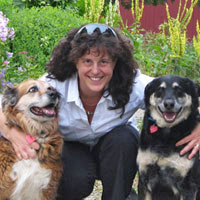
I've been gardening and writing about gardening for more than 20 years, yet I find I'm always learning new things about the plants, insects and other critters that call my backyard home. That's the great thing about gardening — it's never boring! I've worked as a landscaper, on an organic farm, as a research technician in a plant pathology lab and ran a small cut-flower business, all of which inform my garden writing. A few years ago my husband and I purchased a beautiful old Victorian house and opened a pet-friendly B&B; I've spent the last few summers renovating garden beds and adding new ones. My husband once asked me when I'll be finished, to which I replied, "Never!" For me, gardening is a process, not a goal.
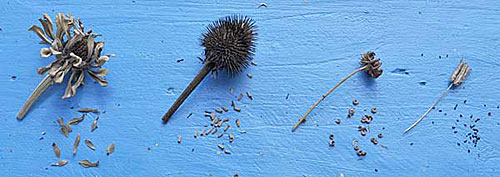
As you clean up the garden in fall, take a moment to collect some seed.
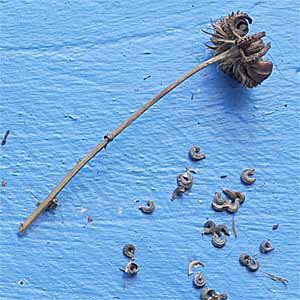
Calendula
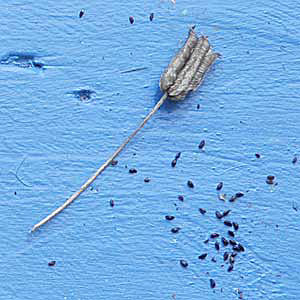
Columbine
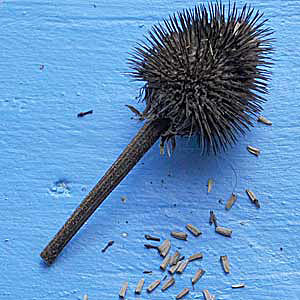
Echinacea
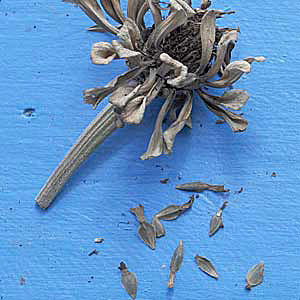
Zinnia
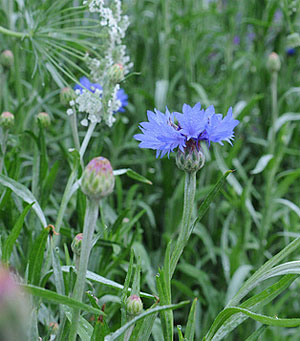
Bachelor's button, a flower with seed that's easy to save.
Heirlooms to Grow: By growing heirloom seeds, you can start a tradition of seed-saving. Diane Ott Whealy, one of the founders of the Seed Savers Exchange, shares some of her favorite heirloom seeds, for vegetables, fruits and flowers.
I'm finally getting around to tidying up some of my flower gardens, and one of the benefits of my tardiness is that there are plenty of seedpods filled with ripe seeds. In a matter of minutes I collected hundreds of seeds for replanting. Saving seeds is one of gardening's best-kept secrets. When else in life can you get something for nothing?
The most obvious reason to save seeds is to save money. Buying a packet of zinnia or calendula seeds will set you back a few dollars and it may contain as few as a dozen seeds. A single flower will usually yield that many, or more.
There are other rewards to saving seeds.
Saving seeds is pretty straightforward, but if you're new to seed-saving, it pays to have a little background information.
Hybrids vs. open-pollinated. If you save and plant seeds from hybrids, the resulting plants may not closely resemble the parent plant. Hybrids are the result of careful crossbreeding of specific parent plants to yield specific traits, and these traits often aren't passed down to subsequent generations. The offspring of hybrid plants might not have the desirable traits of the parent plant; on the other hand, you might get a nice surprise.
If a plant isn't a hybrid, it's described as open-pollinated. If you save seeds from an open-pollinated variety, the offspring plants will more closely resemble the parent plant — they may not be identical but they'll likely be similar. If you get serious about saving seeds, you'll want to research how different plants are pollinated and whether you need to isolate plants to prevent cross-pollination.
Degree of difficulty. If you're new to seed-saving, start with easy plants. Plants that readily self-sow (that is, they naturally propagate themselves via seed they drop) are a good choice; examples include bachelor's buttons, calendula, cleome, columbine, nigella and rudbeckia. Easy vegetables include beans, broccoli, corn, chives and melons.
Some plants are difficult to grow from seed, even for the experienced gardener, so it might not be worth the trouble to save their seeds. Certain perennials, such as peonies, are so slow-growing that it takes years for them to grow from seed to begin flowering. The seeds of many cold-hardy perennials require a prolonged period of chilling before they'll sprout — this isn't difficult but does take some planning and patience.
Collecting SeedsSome plants make it easy to save their seeds. Calendulas and zinnias produce abundant flowers that contain big seeds. Columbines hold their seeds in upright seedpods. For sunflowers and black-eyed Susans, you'll have to get to the seeds before the birds do.
As a general rule, it's best to let seeds fully ripen in their pods before harvesting. That can be trickier than it sounds because some plants scatter their seeds as soon as they're ripe. The seeds may simply drop to the ground, blow away or be ejected from the seedpods. You can tie a paper bag around maturing seedpods to catch the seeds — this thwarts hungry birds, too.
Often, it's easiest to carefully harvest the ripe seedpods and bring them indoors. If they're not completely dry, put them in a dry, airy place protected from hungry rodents to finish drying.
Storing SeedsWhen the pods are completely dry, remove the seeds from the seedpod and separate them from the chaff and other debris. In some cases this can be tricky because the seeds may be tiny or hard to identify. You can research what the seeds look like; an Internet search on zinnia seeds, for example, yields some helpful image results.
Make sure the seeds are completely dry. Then, put them in labeled, airtight, rodent-proof containers and store them in a cool (40-50 degrees F), dry, dark place; a refrigerator works well.
If you're new to this, it's probably best not to rely solely on saved seed. The germination rate may not be as high as that of commercial seed harvested and stored under ideal conditions. And the resulting offspring might give you some surprises. Then again, those surprises are part of the fun of saving seed!
Copyright © www.100flowers.win Botanic Garden All Rights Reserved